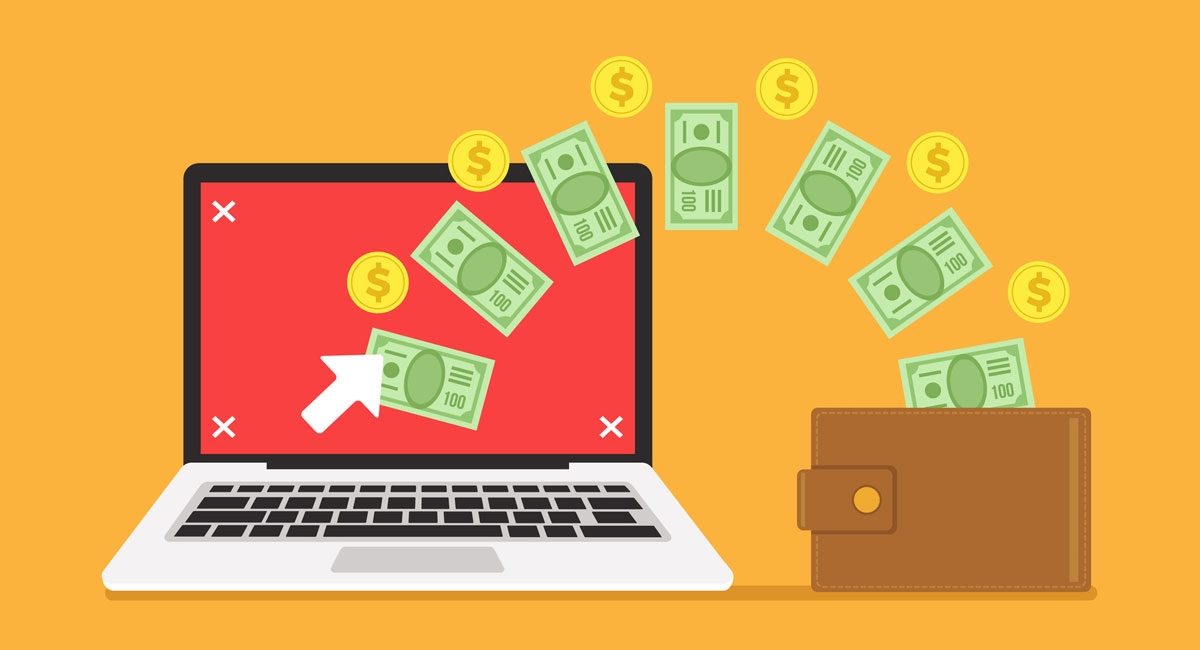How often do you go around your house closing windows and turning lights off that the kids have left on, all the while muttering “may as well throw money out of the window” to yourself before coming downstairs and adjusting the thermostat to ‘off’?
Maybe it’s a dad thing.
Whatever it is, wasting money stings.
In a survey of digital marketers by Rakuten, respondents estimated they waste an average of 26% of their budgets on ineffective strategies and channels.
We’re not talking here about funds lost in the testing and refining process. That money is far from wasted because it provides valuable data about what works and what doesn’t. It optimizes future campaigns, increasing the chances of success.
But there may be a few things you’re not doing or could do better, to make the most of your budget.
So let’s take a look at a few tips and tricks to help you reduce unnecessary waste, maximize your advertising budget and scale your advertising spend.
How To Scale Advertising Effectively – PPC
Creating Effective Landing Pages
You’re getting 1000s of clicks on your ads. Clearly, they’re effective in generating interest. But they’re not converting to sales.
More often than not, this is down to the landing pages. Poorly designed, badly written, or not optimized for mobile. Or any combination of the three.
If ads are the window display, landing pages are the shop itself.
When it comes to creating effective landing pages, there are a few best practices that you should always keep in mind. First and foremost, your landing page should be designed with a single purpose in mind: to convert visitors into leads or customers. In order to do this, your page must be clear and concise, with the most important information available above fold and a strong call-to-action that stands out.
It’s also important to make sure that your landing page is relevant to the keywords or ad campaign that brought visitors to your site. If your page is too general or unrelated to what they were expecting, you’ll likely lose them before they even have a chance to convert. Finally, always test, test, test! Try different versions of your landing page and see which one performs the best. There’s no magic formula for creating the perfect page, but by following these best practices, you’ll be well on your way to success.
Scale Advertising Budgets for Conversions
“We have a bow and arrow and if we aim well, we can hit the target. The problem is that Bayern Munich has a bazooka. The probability that they will hit the target is clearly higher. But then Robin Hood was apparently quite successful.” – Jurgen Klopp, when he was manager of Borussia Dortmund.
Everyone loves an underdog story. Overcoming the odds and winning on a shoestring budget. Reminds me of Moneyball.
But as creative as you may be, there comes a point where spending more to keep up is completely necessary. Especially if your competitors are outspending you on important keywords. Just because you’re spending more, doesn’t mean you can’t be highly effecient while doing it.. That’s what Klopp does now, and look at the success he’s had at Liverpool.
The first step is to figure out how much you’re willing to spend on advertising. This will vary depending on your business, but a good rule of thumb is to start with 10% of your overall budget. From there, you can scale up or down based on your results.
Once you’ve decided how much you’re willing to spend, the next step is to figure out what kind of ads you want to run. There are a variety of options available, from pay-per-click (PPC) ads to display ads (often CPM). Each has its own set of benefits and drawbacks, so it’s important to choose the right one for your business.
Once you’ve selected your ad type, it’s time to start planning your campaign. This is where you’ll decide what kind of message you want to send and how you want to target your audience. Once you have a plan in place, you can start scaling your ad budget accordingly.
Remember to leverage intent audiences to help keep your messaging relevant.
Keyword Analysis
Increasing your budget and expanding your reach also means casting your keyword net wider.
This will increase impressions and traffic – great figures to show your boss. But it’s not the overarching figures that are important, it’s their quality. This is where keyword relevancy comes in.
If there’s no relevancy between the search term and message you’re delivering, it’s likely to result in lower click-through-rates and conversions, ultimately reducing your ROAS. Like a literal net cast by fishermen, you’re looking for ‘fish’ that there’s an appetite for. And when the net is drawn up, the rogue stuff will need to be discarded, back into the keyword ocean.
There are plenty of tools online that can help you with this like Ahrefs and SEMrush.
Competitor Analysis
Ok, the last tip for scaling PPC advertising, because I’m already 600-odd words in and I’ve got things to do, is competitor analysis.
Competitor analysis is a crucial part of any business’s marketing strategy. By understanding your competitors, you can better position yourself to attract customers and beat them at their own game.
The beauty of online advertising is there’s no hiding place (aside from where Google puts most of your useful marketing campaign data – ouch, Jack).
You couldn’t just waltz into your competitors’ brick-and-mortar stores and ask for insights on how many customers they’ve had in store and which things they’ve bought. Unless you’re undercover.There are a few key things to keep in mind when conducting competitor analysis:
1. Know your audience. Who are you trying to reach with your marketing? What needs or wants do they have that you can address? Knowing your target audience is the first step to understanding your competition.
2. Research, research, research. Use all the resources at your disposal to learn as much as you can about your competitors. Google them, read their website content, follow them on social media, and see what others are saying about them online.
3. Identify their strengths and weaknesses. Once you have a good understanding of your competition, you can start to identify their strengths and weaknesses. What are they doing well? What could they be doing better? Use this information to your advantage in your own marketing strategy.
4. Find your niche. When you know what your competitors are up to, you can better position yourself to find your niche in the market. What unique value can you offer that they cannot? Focus on promoting your uniqueness to attract customers away from the competition.
5. Keep tabs on them. Competitor analysis is not a one-time thing – it should be an ongoing process so you can keep up with the latest changes in the market. Stay flexible and be prepared to adjust your own marketing strategy as needed.
What is a Good ROI For Digital Advertising?
There’s no simple answer to the question, “What is a good ROI for digital advertising?” It all depends on your specific business goals, target audience, and advertising strategy.
That said, there are some general benchmarks you can use to gauge whether or not your digital advertising efforts are paying off. For example, a study by AdEspresso found that the average ROI for Facebook ads is 122%. This means that for every $1 you spend on Facebook ads, you can expect to earn $1.22 in return.
Of course, your mileage may vary. If you’re selling high-ticket items or services, your ROI will likely be lower than if you’re selling low-cost items or services. And if you’re targeting a very specific niche audience, your ROI may be higher than if you’re targeting a general audience.
So how do you find the right ROI benchmark to aim for?
The same way you do in pretty much all other aspects of marketing. By testing, checking, and refining.
Take a look at previous campaigns that are similar to the ones you want to run, and ask:
- What was the goal?
- What is the investment?
- What were the results?
- How does this compare to other marketing activities?
Once you’ve run a few campaigns, you’ll get a good idea of your average ROI and what’s attainable according to your industry, strategy, and distribution channels.
Ways To Improve ROAS (Return on Ad Spend)
A few points to remember about ROAS before we get into it:
- ROAS is a crucial metric for marketers to determine the success of campaigns.
- It’s also different from ROI because it’s focusing on returns from specific ads or campaigns.
- Google says the average ROAS through Ads is 2:1, but it’s good to aim a little higher if it’s reasonable.
Ok, so how can you improve it? Here are a few things to think about:
Try New Ad Placements
- For social sites, strategic ad placement works well. And newsfeed ads usually do better than other ads, so try that too.
- For eCom sites, mix it up a little – try banner ads, landing pages, and pop-ups and measure their success (or failure).
- In-Stream ads vary in cost and effectiveness according to where they’re placed within the video. Try different combinations.
- Mobile ad spending reached $288bn in 2021 and is forecast to reach $400bn by 2024. TikTok, Facebook, and Instagram are all among the top downloaded apps. Don’t need to say any more than that.
Reduce/remove cost on low-performing campaigns
If a campaign is costing you money or not generating enough revenue, it’s time to cut your losses and focus on the ones that are.
We touched on keywords earlier – and it applies here too. Analyze them and refine them. Review your target audience. Once you’ve done that, funnel precious funds to keywords and audiences that convert.
You can also add negative keywords to your ads which excludes them when someone searches those specific terms.
Use Target ROAS in Google
According to Google, “…this analyzes and predicts the value of a potential conversion every time a user searches for products or services you’re advertising. Then, it automatically adjusts your bids for these searches to maximize your return on them”.
While this sounds great in theory, the practice of using Target ROAS as a bidding strategy shows mixed results. Automated bidding will only deliver results based on the data fed to the advertising platform.
In order to reap the maximum benefit of Google’s automated bidding, make sure you’re only targeting legitimate, high-intent buyers by blocking invalid traffic.
Analyse and optimise external factors
If you have a low ROAS, go to the doctor.
No, in all seriousness, it doesn’t mean the campaign has failed. It could be highlighting a problem outside of your ad strategy.
We mentioned getting your landing page ducks in a row. But it could be a host of things, like pricing your products too low or too high. Poor UX confusing customers trying to buy stuff. Or calls-to-action not being clear enough.
So check these things before pulling the plug.
Capture Existing Demand With Inbound Advertising
When you go looking for a product or service online, and find it, that’s known as inbound marketing. It’s specific. You’re looking for a solution to a problem and find it in your own time.
When you click an attention-grabbing ad that popped up as you drink your morning coffee and catch up online, that’s outbound marketing.
In other words, inbound marketing tailors to existing demand, and outbound attempts to create it.
The classic push v pull methodology.
On social media, prospects follow people and companies they trust. They give contact details away and sign up to newsletters for the same reason. This is where you can use inbound marketing to your advantage.
Although outbound marketing gets quicker results, once you turn off the ads, everything stops.
Inbound marketing doesn’t give you immediate results because it takes time for Google to index and rank your content. But in the long-term, it’s 62% less expensive than outbound because it drives organic traffic from lots of different channels.
It takes time to build, but showing patience and developing content to meet the existing demand is a great way to scale your advertising capabilities.
Scale Your Advertising With Confidence
When it comes to scaling your advertising and maximizing ad budgets, there’s one thing we haven’t mentioned yet that could severely hamper your progress – Invalid Traffic.
Unintended clicks, fraudulent clicks, or invalid clicks. They all sting – not just by decimating ad budgets but by skewing the data you rely on so much for testing and refining campaigns and strategies. Get started with a free trial to find out how much you’re spending on invalid activity.





